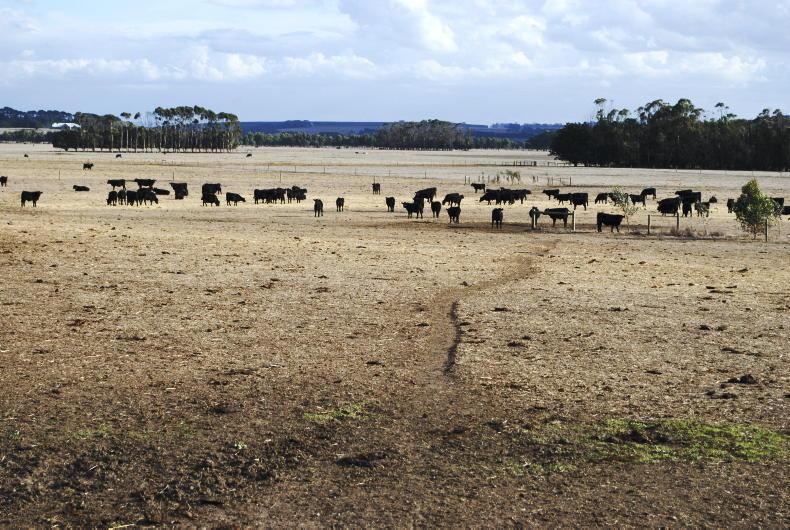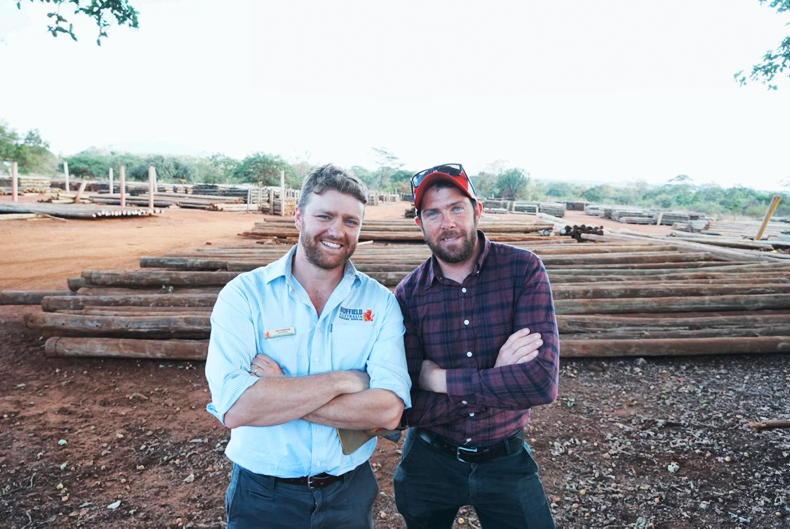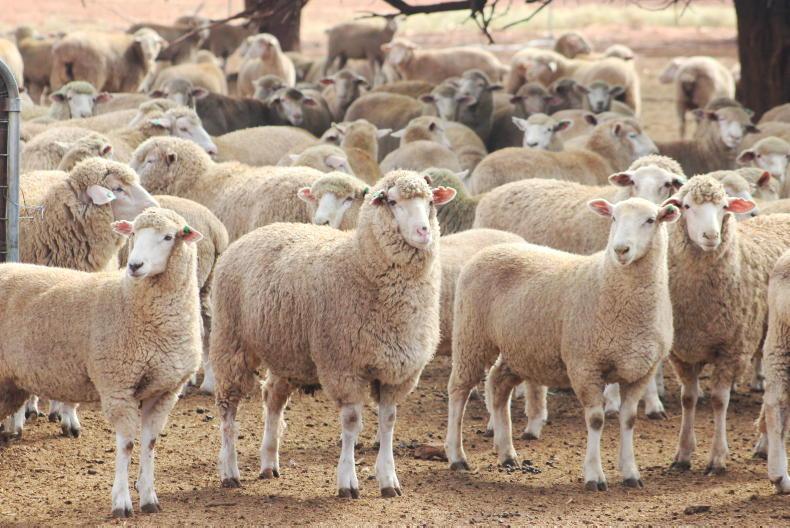I’m on a minibus in Qatar heading for the airport with eight farmers from the USA, Canada, Brazil, New Zealand and Australia. Our next flight will take us to Kenya to learn how agriculture works there.
How the hell did this happen? Am I in a dream? Thankfully not. Instead, I’m on part of my global travel for my Nuffield scholarship.
Let me give you my background first. My name is Pat O’Meara. I’m married to Siobhan and we have one young daughter.
I grew up on a mixed farming enterprise of tillage, sheep and cattle in north Tipperary where a highlight for the family was winning Guinness’s first prize for malting barley in 1998.
I officially took over the running of the farm in 2006 and converted the farm to dairying in 2014.
I have grown the farm over the years and we’re now milking 200 cows in a spring-calving system, with all my replacements contract-reared. During this period, I also worked as an agri adviser with AIB, but have recently left this position to concentrate full-time on farming and family life.
Nuffield
After much deliberation, I successfully applied for a Nuffield scholarship in 2018 and have joined an alumni of 1,700 other scholars from all around the world.
The initial part of my Nuffield scholarship took me on the global focus programme (GFP), where eight fellow scholars travelled to four continents and seven countries over a six-week period.
During this period of travel, it became obvious to me that the people you interact with were the most important aspect of the travel. They are the ones who inspire you.
A particularly pleasing part of this programme was that many of the most inspiring people we met were Irish or claimed Irish roots.
From my experience, it is clear that Ireland has a huge number of positives, that many of us take for granted, including:
An industry to purchase and market our products.A mature industry that has integrity.Positive perceptions around the world.High-quality and safe food products.Independent advisory and training services.During the six weeks of the GFP, my group met in excess of 100 farmers and industry professionals in the agribusiness sector.
Interestingly, in most cases, these farmers or agribusiness companies face similar challenges to us here in Ireland, including:
Climate change.Water and air quality. Labour shortages.Disease issues.Volatility of market prices and stable income. The disconnect between the urban population and how their food is produced.An aging demographic of people employed in the sector.Curtailing food waste.Requirement to produce more food from less inputs.Contrast
The highlight of my travels came towards the end of the six-week GFP, as we got to travel extensively through two countries that I never had exposure to before – Qatar and Kenya. The contrast between these countries is mind blowing and on so many levels.
The first major contrast in these two countries is from a population point of view. Qatar has a total population of 2.7m people, but only 300,000 people are actual Qataris.
The country is currently in a building boom in the run-up to the 2022 World Cup and, as a result, close to 40% of its population is employed in the building sector.
The major question is what will happen to the population when the majority of this labour is no longer required and what impact will it have on a country if one third of the population ups and leaves?
In contrast, Kenya is facing an explosion in its population, where numbers are predicted to increase from 50 million to 80 million in less than 20 years.
Interestingly, this growth in population will be driven by increased life expectancy rather than birth rate. People are living longer in Kenya.

Farm owner and workers in Kenya herding their cattle with wild zebra in the background
Travelling around the country really got me thinking. Ireland struggles to provide services with a only a modest increase in its population, so how does a relatively poor country like Kenya cope with such a vast increase in its population when it already struggles with housing, food supplies and employment.
Access to capital
The second big difference between Kenya and Qatar is the availability of capital. Qatar wins hand down in this regard and the results are clear to be seen. The country has built its agri industry from the ground up to ensure that they meet their target to have 2.5 years of food security to hand at all times.
As you will imagine, the position is very different in Kenya, where access to finance is very difficult and expensive. Farmers in Kenya, just like in other parts of the world, are trying to maximise their potential, but access to cash is restraining growth.
A key insight was provided by a group of small farmers on the outskirts of Nairobi. This group of farmers was trying to raise capital to fund the purchase of plastic lining to harvest rainwater and overcome the far too common impact of drought.
Some farmers had already dug the pits to harvest the rainwater, but they were unable to raise the €300 required for the plastic lining that could have been potentially life changing for them.
It should be noted that access to capital is not an issue for every sector in Kenya. The biggest problem in the country is the even distribution of wealth and capital.
Market support
The third major contrast between Kenya and Qatar is the level of market support. In Qatar, the government will either support the capital project, the market price or both.
The priority of the Qatari government is food security and they have the capital to ensure it happens.
On the other hand, Kenyan farmers are selling their produce on world markets where they have to make a return. This was really evident on a trip to a tea plantation where the area was seeing a significant reduction in the acreage of land planted because it was under pressure to compete with both domestic and foreign competitors. On the other hand, there was no support available to these farmers.
A key conclusion of this element of my travels is that the agri community (at all levels) needs to get more involved in engaging and educating the growing proportion of non-farming people at all levels.
We need to greater plan our communications and a couple of great quotes that I heard on this trip included:
10 people who speak make more noise than 10,000 who are silent.
Don’t assume you know what people want to hear.
The fate of the world is in the hands of those that turn up.
I’m on a minibus in Qatar heading for the airport with eight farmers from the USA, Canada, Brazil, New Zealand and Australia. Our next flight will take us to Kenya to learn how agriculture works there.
How the hell did this happen? Am I in a dream? Thankfully not. Instead, I’m on part of my global travel for my Nuffield scholarship.
Let me give you my background first. My name is Pat O’Meara. I’m married to Siobhan and we have one young daughter.
I grew up on a mixed farming enterprise of tillage, sheep and cattle in north Tipperary where a highlight for the family was winning Guinness’s first prize for malting barley in 1998.
I officially took over the running of the farm in 2006 and converted the farm to dairying in 2014.
I have grown the farm over the years and we’re now milking 200 cows in a spring-calving system, with all my replacements contract-reared. During this period, I also worked as an agri adviser with AIB, but have recently left this position to concentrate full-time on farming and family life.
Nuffield
After much deliberation, I successfully applied for a Nuffield scholarship in 2018 and have joined an alumni of 1,700 other scholars from all around the world.
The initial part of my Nuffield scholarship took me on the global focus programme (GFP), where eight fellow scholars travelled to four continents and seven countries over a six-week period.
During this period of travel, it became obvious to me that the people you interact with were the most important aspect of the travel. They are the ones who inspire you.
A particularly pleasing part of this programme was that many of the most inspiring people we met were Irish or claimed Irish roots.
From my experience, it is clear that Ireland has a huge number of positives, that many of us take for granted, including:
An industry to purchase and market our products.A mature industry that has integrity.Positive perceptions around the world.High-quality and safe food products.Independent advisory and training services.During the six weeks of the GFP, my group met in excess of 100 farmers and industry professionals in the agribusiness sector.
Interestingly, in most cases, these farmers or agribusiness companies face similar challenges to us here in Ireland, including:
Climate change.Water and air quality. Labour shortages.Disease issues.Volatility of market prices and stable income. The disconnect between the urban population and how their food is produced.An aging demographic of people employed in the sector.Curtailing food waste.Requirement to produce more food from less inputs.Contrast
The highlight of my travels came towards the end of the six-week GFP, as we got to travel extensively through two countries that I never had exposure to before – Qatar and Kenya. The contrast between these countries is mind blowing and on so many levels.
The first major contrast in these two countries is from a population point of view. Qatar has a total population of 2.7m people, but only 300,000 people are actual Qataris.
The country is currently in a building boom in the run-up to the 2022 World Cup and, as a result, close to 40% of its population is employed in the building sector.
The major question is what will happen to the population when the majority of this labour is no longer required and what impact will it have on a country if one third of the population ups and leaves?
In contrast, Kenya is facing an explosion in its population, where numbers are predicted to increase from 50 million to 80 million in less than 20 years.
Interestingly, this growth in population will be driven by increased life expectancy rather than birth rate. People are living longer in Kenya.

Farm owner and workers in Kenya herding their cattle with wild zebra in the background
Travelling around the country really got me thinking. Ireland struggles to provide services with a only a modest increase in its population, so how does a relatively poor country like Kenya cope with such a vast increase in its population when it already struggles with housing, food supplies and employment.
Access to capital
The second big difference between Kenya and Qatar is the availability of capital. Qatar wins hand down in this regard and the results are clear to be seen. The country has built its agri industry from the ground up to ensure that they meet their target to have 2.5 years of food security to hand at all times.
As you will imagine, the position is very different in Kenya, where access to finance is very difficult and expensive. Farmers in Kenya, just like in other parts of the world, are trying to maximise their potential, but access to cash is restraining growth.
A key insight was provided by a group of small farmers on the outskirts of Nairobi. This group of farmers was trying to raise capital to fund the purchase of plastic lining to harvest rainwater and overcome the far too common impact of drought.
Some farmers had already dug the pits to harvest the rainwater, but they were unable to raise the €300 required for the plastic lining that could have been potentially life changing for them.
It should be noted that access to capital is not an issue for every sector in Kenya. The biggest problem in the country is the even distribution of wealth and capital.
Market support
The third major contrast between Kenya and Qatar is the level of market support. In Qatar, the government will either support the capital project, the market price or both.
The priority of the Qatari government is food security and they have the capital to ensure it happens.
On the other hand, Kenyan farmers are selling their produce on world markets where they have to make a return. This was really evident on a trip to a tea plantation where the area was seeing a significant reduction in the acreage of land planted because it was under pressure to compete with both domestic and foreign competitors. On the other hand, there was no support available to these farmers.
A key conclusion of this element of my travels is that the agri community (at all levels) needs to get more involved in engaging and educating the growing proportion of non-farming people at all levels.
We need to greater plan our communications and a couple of great quotes that I heard on this trip included:
10 people who speak make more noise than 10,000 who are silent.
Don’t assume you know what people want to hear.
The fate of the world is in the hands of those that turn up.











SHARING OPTIONS